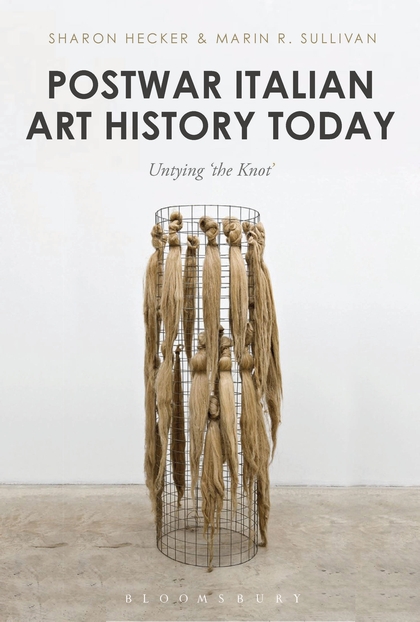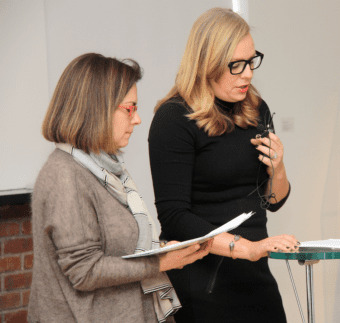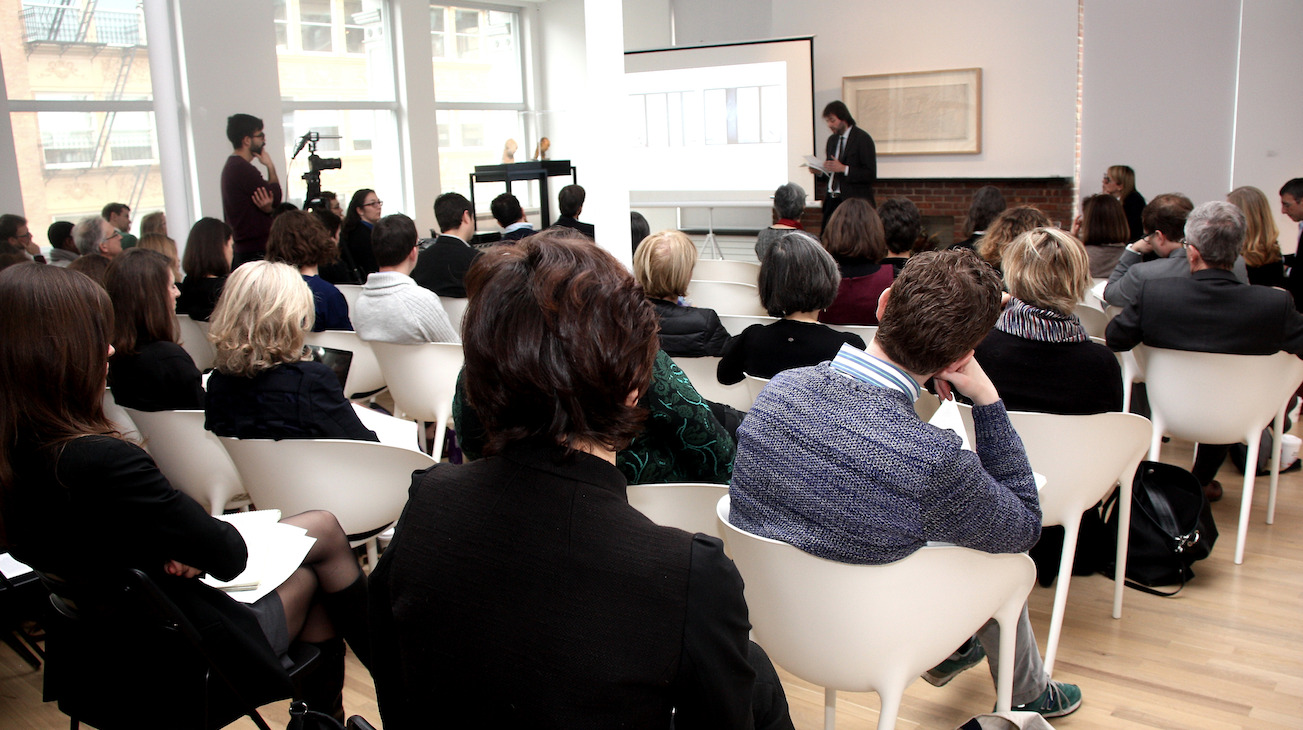
This fall marks the 50th anniversary of Arte Povera, the movement coined by critic and curator Germano Celant — in connection originally with a group show he organized at the Galleria La Bertesca in Genoa in 1967. It came to define a loose group of artists making process-oriented art out of nontraditional materials and mediums (the term literally refers to “poor art”). In New York this fall numerous galleries have mounted exhibitions around the anniversary, including Arte Povera, curated by Ingvild Goetz at Hauser & Wirth; Ileana Sonnabend and Arte Povera, curated by Germano Celant at Levy Gorvy; and Contingencies: Arte Povera and After at Luxembourg & Dayan.
CIMA marks the anniversary by looking back to the two-day Study Day program we presented in February 2015, Untying ‘the Knot’: the State of Postwar Italian Art History Today. We posed some questions to the organizers of the program, Sharon Hecker and Marin R. Sullivan:

How did the idea for this program come about?
The time seemed right. In our numerous conversations about our respective work we both noticed that there was an enormous amount of new research going on in the field. We felt that the moment had come to take stock of the field. We also wanted to create an opportunity to generate a transnational discussion. It seemed important to get scholars from both sides of the Atlantic together in the same room, and also to get a cross-section of contemporary scholarship on postwar Italian art. Our sense was that dialogue and conversation among scholars from different countries and with different specializations could bring forth fresh, new ideas about postwar Italian art and we very much hoped to generate a new conceptual working model upon which future scholars could draw.
I recall that you were surprised by the response – by the number of great proposals that you received. What are your thoughts on the “state of postwar Italian art history” today?
We did receive a tremendous number of submissions, from scholars based in the U.S, Canada, the U.K., and Italy at various stages in their career, more than we could ever hope to include over a two-day conference. That in and of itself speaks to an increasing interest in the field, and seemed to be supported by the increase in exhibitions, books, special journal issues, and even auction prices over the past decade or so. Most of all, we were surprised by the types of topics we received: still a lot of papers on Arte Povera—though focusing on “lesser known” artists; papers that examined the networks of artists, critics, and gallerists that emerged during the time period; papers questioning the categorical distinction of “postwar Italy” as it relates to the visual arts. We did not, however, receive a lot papers that quite frankly matched our own interests in the field—issues around materiality, sculpture, or design. We also received no papers at all on the artists we have come to consider “canonical” postwar Italian artists (Lucio Fontana and Piero Manzoni to name only two) or Arte Povera artists. This strongly suggested to us a shift in thinking and in the way the field is being conceived. It felt to us that the standard narrative was on the cusp of being rewritten in new terms. That is always a very exciting moment, when one narrative has gone its course and another is just beginning to emerge. That is where we thought we could best position ourselves.
What were some of the surprises for you from the papers? What most struck you?
What comes to mind for me here was the resistance to the definitive break that art historians apply to the divisions of pre- and post-WWII—that there is a lot more continuity. We also were struck by the emphasis on transatlantic conversations that are now growing among scholars. A third thing that surprised us was the uneasy, complex relationship that Italians had with the United States and American artists. And finally, we realized that there is still a lot of work to be done, and that the conference was really only a starting point for important scholarly dialogue.

I found it interesting that although the frame of the program was Germano Celant’s 1985 Arte Povera exhibition “The Knot” at PS1, Celant himself was not the subject of much discussion. What are your thoughts on that?
This was curious to us, as we were expecting to receive papers on this question, but did not. This, too, suggested to us a shift in the way the field wants to go, towards what one might term a more inclusive, open, and transnational view of the field.
What has happened since the program? There is a book coming out?
Yes! Bloomsbury will be publishing Postwar Italian Art History Today: Untying ‘the Knot’ in 2018. This edited volume will feature thirteen essays from conference participants and two additional essays from conference attendees, organized into what we felt were the four main themes that emerged from the two-day event at CIMA: Reconsidering the Weight of Italy; Re-Imagining Realism; Rethinking Modes of Patronage; and Reassessing Arte Povera. It is our hope that the volume will prove to be an invaluable resource for students and scholars interested in postwar Italian art and its histories, and while we are thrilled to see a selection of all of the excellent papers from the conference in book form, we are even more appreciative of the dialogues and relationships that developed because of the event. In the two years since, participants have collaborated on additional conference and publication projects, and in that way, we think that the conference also contributed to a fortification of the field itself. We really hope that our volume will function as a launching pad and are looking forward to seeing what future ideas it will generate.
